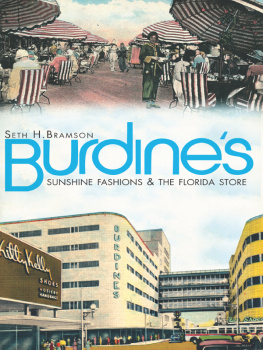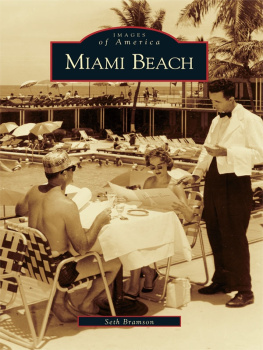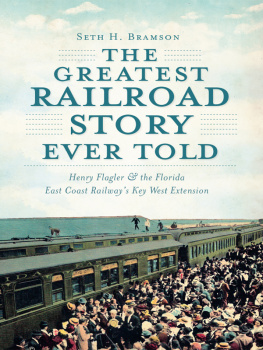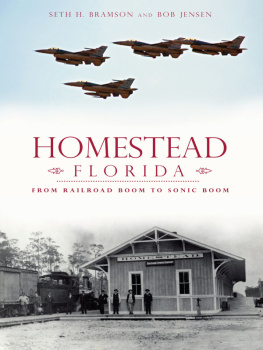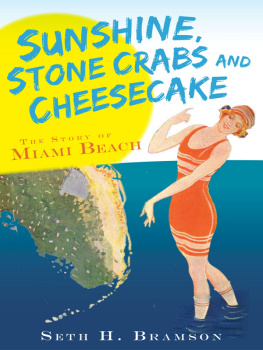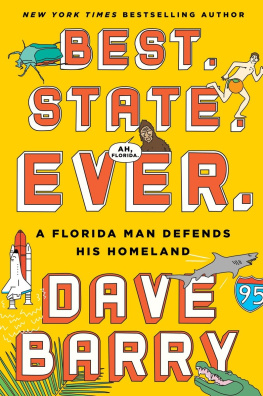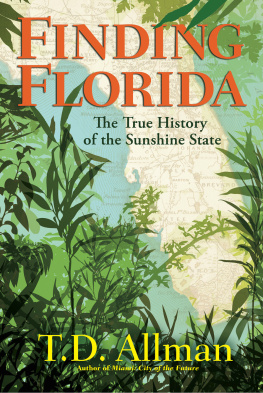

Published by The History Press
Charleston, SC 29403
www.historypress.net
Copyright 2011 by Seth H. Bramson
All rights reserved
All images are from the authors collection unless otherwise noted.
First published 2011
e-book edition 2012
ISBN 978.1.61423.385.5
Bramson, Seth, 1944
Burdines : shopping in the sunshine / Seth Bramson.
p. cm.
print edition ISBN 978-1-60949-398-1
1. Burdines (Department store)--History. 2. Department stores--Florida--History. I. Title.
HF5465.U64B873 2011
381.141097593--dc23
2011038135
Notice: The information in this book is true and complete to the best of our knowledge. It is offered without guarantee on the part of the author or The History Press. The author and The History Press disclaim all liability in connection with the use of this book.
All rights reserved. No part of this book may be reproduced or transmitted in any form whatsoever without prior written permission from the publisher except in the case of brief quotations embodied in critical articles and reviews.
To the good and kind people, as most of them were, I worked with at Burdines, primarily the employees of the food division of the downtown Miami store, and to finally be able to say thank you to them for the knowledge and insights they so graciously and unhesitatingly imparted to me, I warmly and with sincere gratitude dedicate this history of a once great company and its management, staff and customers.
Contents
Acknowledgements
To use the terminology of the latter Burdines era, writing this wonderful book has been a trip! Whether reaching out to members of the community for input and material to include or digging into and through old files and archives, the journey has been nothing short of fascinating. One of my Florida International University students, David Batista, provided a number of Burdines items for our use, while the Polk County (Florida) Historical Museumthrough the kind assistance of Gail Seger, library assistant at the Polk County Historical and Genealogical Librarywas kind enough to provide the societys June 1996 Historical Quarterly, in which the feature story was Burdine & SonThe Bartow Store, written by the late John Burdine Crum and which provided a wealth of information on William Burdine, his store in Bartow and his 1898 move to Miami, which was meant to be a permanent move and not, as had been previously thought and written of, as a temporary move only for the purpose of establishing a branch of the Bartow store on the East Coast.
Don Boyd, who maintains a marvelous website of Greater Miami photos, came through like a champwhen I e-mailed him to ask him if he had any Burdines images that we could use for the book, he did, but not just the usual suspects. Indeed, it was Don who provided the incredibleand very, very rareimages of the Burdines store on Biscayne Boulevard in what came to be known as the Sears building; for his allowing us to use them, heres a special tip of the Hatlo hat to Don!
Longtime friends Andrea and Jonathan Nelson allowed me to use their 1951 Burdines tearoom menu, and I am certainly grateful to them for their kindness in doing so. Miami Beach High graduate Roberta Small remembered her visits to the store, while Saralyn Nemser and her brother, Benjamin, shared their memories with me, as did their mother, Myrna Bramson. Barbara (Kaplan) Gertner took the time to, in her own inimitable fashion, bring her four years of employment at the store to life for me.
A warm thank-you is also due to our friends Anna (Mickey) and Sherman Tobin, the former the first cousin of Burdines longtime president, CEO and chairman, Alfred Daniels. It was Mickey and Sherman who, as Mr. Danielss only Miami-area family members, saw to it that he was warmly welcomed, helped to arrange Westview Country Club membership for him and spent a great deal of time with him. Fortunately for posterity, they recorded much of his lifes activities before and during his many years in Miami, remaining in touch after he left, ostensibly to retire but instead going to California to become chairman of I. Magnins, the West Coast equivalent of Lord and Taylor or Henri Bendel.
Longtime (but not old!) friend Susan Carrey, a former neighbor, fellow Miami Beach High graduate and a twelve-year Burdines associate, was just wonderful in offering help and furnishing information, and if the store were still in existence, a present from Burdines would be the best thank-you I could offer her.
Our friends at the Fort Lauderdale Historical Society were most gracious in supplying information on the Burdines store in that city, as well as on the municipal structures that it replaced. As they have been many times in the past, the research staff at HistoryMiami was completely available to share information with me on the family and the stores.
Linda Cicero, famed food writer for the Miami Herald, graciously shared several Burdines dining room recipes with us, and while we were salivating, we were also thinking about how much we appreciated her help.
As always, a very warm thank-you must go to our IT director and webmaster, Adam Rogers, who worked his usual magic and relieved me of the worry of getting the images to our publisher in the proper format.
Regretfully, it must be noted that many of the Burdines executives mentioned in the 1992 book that was written on the firms history have now passed on, hence they are unavailable as contacts. Several of the executives who are still listed either in phone books or on whitepages.com did not return requests for information, and while Roddey Burdine Jr.s phone in a western state has been disconnected, he did not return a request to his website for information and assistance.
Introduction
What a story! What an amazing and incredible story!
It is difficult to imagine, given the world-class city that Miami has become, that the entire region was, barely more than 115 years ago, a wilderness, replete with huge reptiles, hungry bears, panthers, innumerable snakes, rodents and other such varmintsas well as, perhaps, the most misery-creating of all, the mosquitoes. Oh the mosquitoes! Literally billions of them throughout the area, making life for the early settlersparticularly during the long, hot, humid, precipitation-filled and rain-drenched summersmiserable, if not perilous. And yet the idea of being pioneers, of coming to an American frontier in a place far south in a mostly unknown state called Florida, held a certain allure and attraction to a unique breed of men and women, not necessarily rough-and-tumble types (although there was no shortage of them) but rather people who saw opportunity and who would come to the southernmost part of what someday would be known as the Sunshine State to buy land, build homes, raise families, construct schools, open businesses and, most importantly, build a city.
The names of the first settlers, beginning in the mid- to late 1870s, from Gleason and Hunt to Sturtevant, Brickell, Tuttle, Collins, Pancoast, Merrick and Cohen, are well known to longtime Miamians, but the true and real beginning of what would, just a few years after it had become an incorporated municipality, become known as the Magic City is generally accepted as being the week of April 15 to April 22, 1896on the former date the first train (a construction and supply train) of the fabled Florida East Coast Railway arrived on the shores of Biscayne Bay, while the first passenger train, carrying the legendary Henry M. Flagler, arrived on the latter date. It is from those two events that the commercial history of Miami emanated.
Next page
